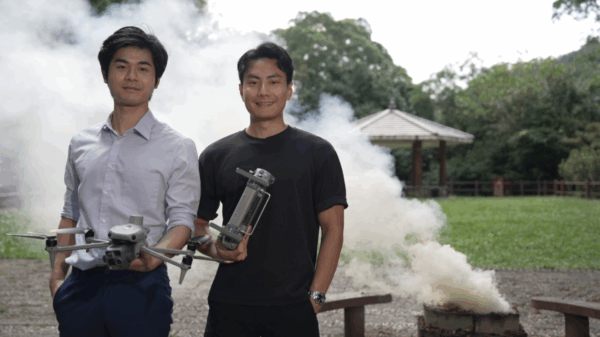Researchers at Rice University have developed a groundbreaking method for detecting environmental toxins using genetically modified E. coli. This innovation allows for real-time monitoring of arsenite and cadmium levels in water, significantly enhancing safety measures in environmental management. The findings were published on July 29, 2025, in the journal Nature Communications.
The study, led by researchers Xu Zhang, Marimikel Charrier, and Caroline Ajo-Franklin, introduces a novel approach to bioelectronic sensors. By engineering bacteria to function as living multiplexed sensors, the team created a system capable of detecting multiple toxins simultaneously. This advancement addresses a critical inefficiency in traditional sensors, which typically require separate channels for each specific contaminant.
Innovative Sensor Technology
The researchers were inspired by fiber-optic communication technology, where different light wavelengths transmit distinct data streams. They applied a similar concept, utilizing varying redox potentials to multiplex information from a single sensor. “We needed to determine how to robustly separate signals of different energies regardless of the sample or toxin,” said Zhang, a biosciences postdoctoral researcher.
The team developed an electrochemical method to isolate redox signatures from the modified bacteria. This technique converts these signals into binary responses, indicating the presence or absence of the targeted toxins. The engineered E. coli strains can accurately detect arsenite and cadmium, even at levels set by the Environmental Protection Agency (EPA).
The multiplexed sensors demonstrated successful detection capabilities during environmental tests, identifying both arsenite and cadmium at EPA-standard thresholds. This feature is crucial as the simultaneous presence of these metals can amplify their toxic effects, posing greater risks than either would independently.
Future Implications and Applications
“This system allows us to detect combined hazards more efficiently and accurately,” noted Charrier, a bioengineering senior research specialist. The modular design of the platform suggests that it could be adapted to monitor a broader range of toxins in the future.
Beyond monitoring heavy metals, the implications of this technology extend to real-time, remote surveillance of water systems, pipelines, and industrial sites. The underlying bioelectronic framework hints at future applications in biocomputing, where engineered cells could not only sense but also process and transmit environmental data.
The research team envisions a future where these multiplexed wireless sensors become essential tools for environmental monitoring and diagnostics. Ajo-Franklin emphasizes the adaptability of their approach, stating, “We believe it’s only a matter of time before cells can encode, compute, and relay complex environmental or biomedical information.”
This study marks a significant step toward the development of intelligent biosensor networks that harness the capabilities of microorganisms. With ongoing advancements in the field of bioelectronics, the potential for these sensors to transform environmental safety practices is becoming increasingly evident.
For more detailed information, refer to the published study: Xu Zhang et al, “Multichannel bioelectronic sensing using engineered Escherichia coli,” Nature Communications (2025). DOI: 10.1038/s41467-025-62256-1.






































































